In the given figurethe wedge is fixed, pulley is frictionless and string is light. Surface AB is frictionless whereas AC is rough. If the block of mass 3m. Slides down. With conttant velocity, then the coefficient of friction between surface AC and the block is
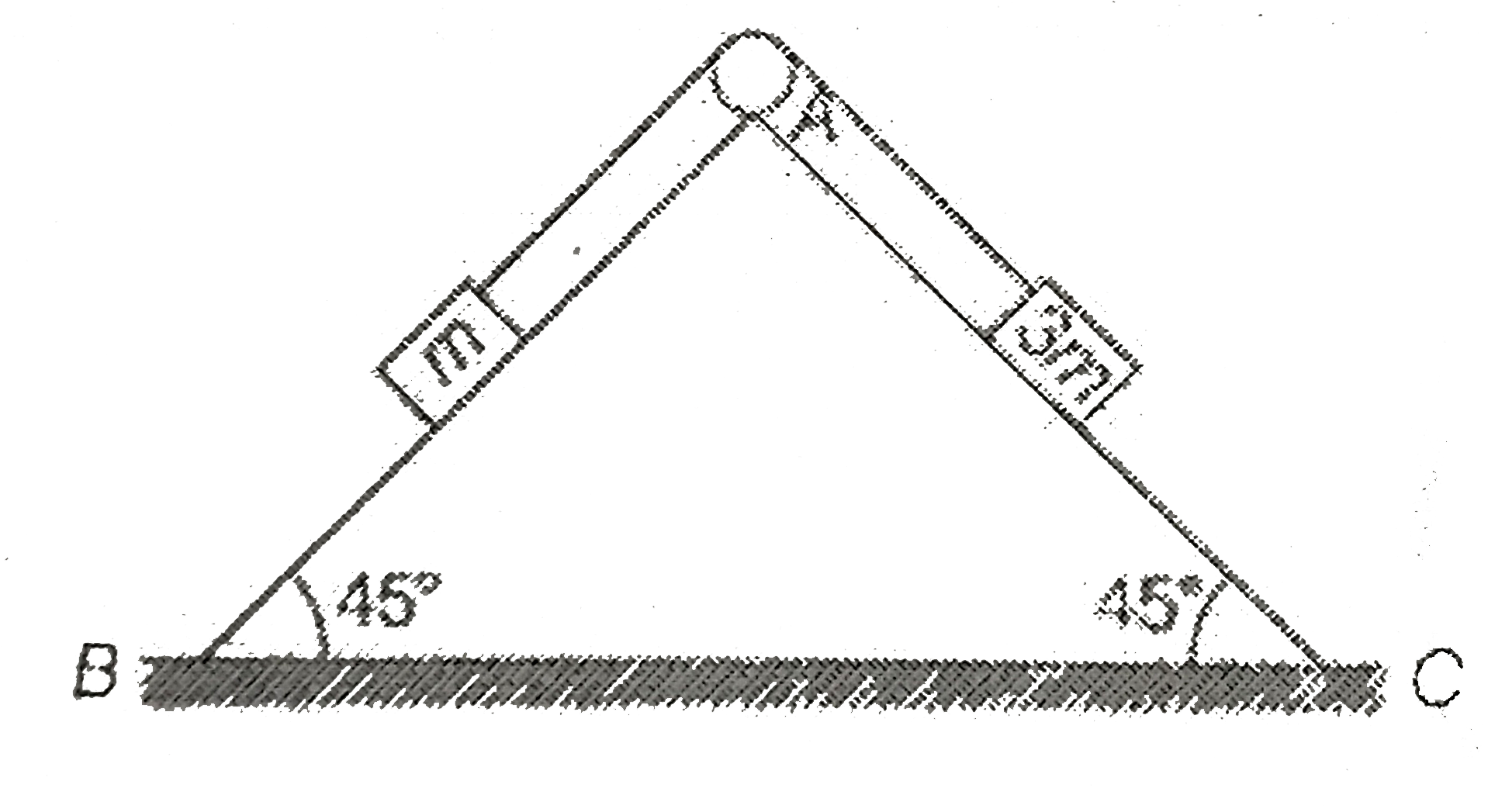
13
23
12
43
The correct Answer is:C
If a moves down the incline by 1m, B shall move up hv12m
If the speed of B is v then the speed of A will be 2v.
From conservation of energy, Gain in KE = loss in PE
12mA(2v)2+12mBv2=mAg×35−mBg×12
soving we get v=12√g3
Topper's Solved these Questions
Similar Questions
A rectangular block is kept on a rough horizontal surface and given some initial velocity. The coefficient of friction between the block and the surface is constant. The block will topple
View SolutionIn the situation given all surfaces are frictionless, pulley is ideal and string is light. If F=Mg/2, find the acceleration of both the block in vector form.
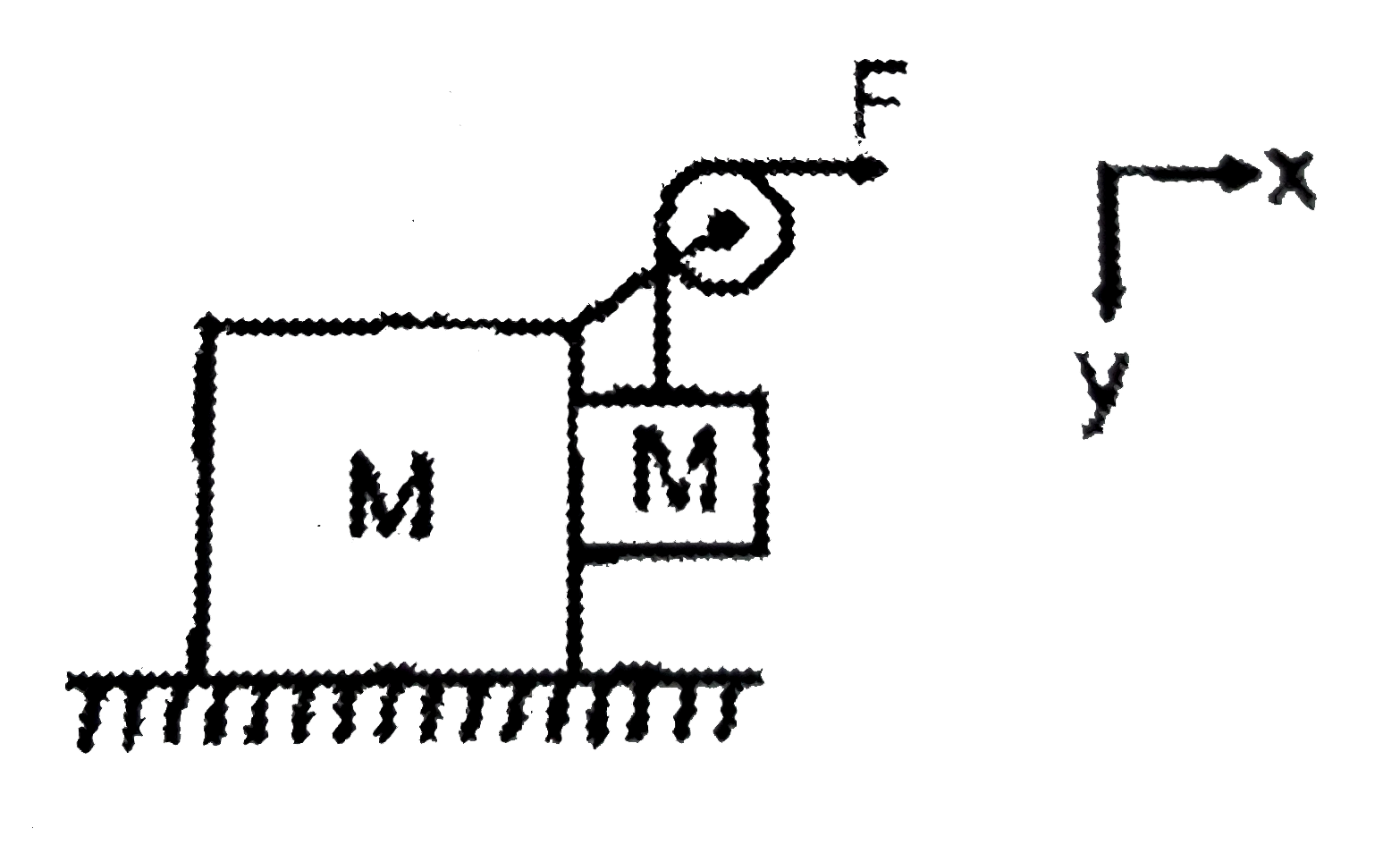
View Solution
Knowledge Check
A block of mass m is at rest on a rough inclined plane, whose friction coefficient is μ. Net force exerted by surface on block is :-
AmgBmg sin θCμmgcosθDμmgsinθBlock A of mass M in the system shown in the figure slides down the incline at a constant speed. The coefficient of friction between block A and the surface is 1 3 3 . The mass of block B is-
 Am/2Bm/3C2m/3Dm/√3
Am/2Bm/3C2m/3Dm/√3Block A of mass m and block B of mass 2m are placed on a fixed triangular wedge by means of a light and inextensible string and a frictionless pulley as shown in fig . The wedge is inclined at 45∘ to the horizontal on both sides . The coefficient of friction between the block Aand the wedge is 2/3 and that between the block B and the wedge is 1/3 .If the system of AandB is released from rest then find .
a. the acceleration of A
b. tension in the string
c.the magnitude and direction of the frictional force acting on A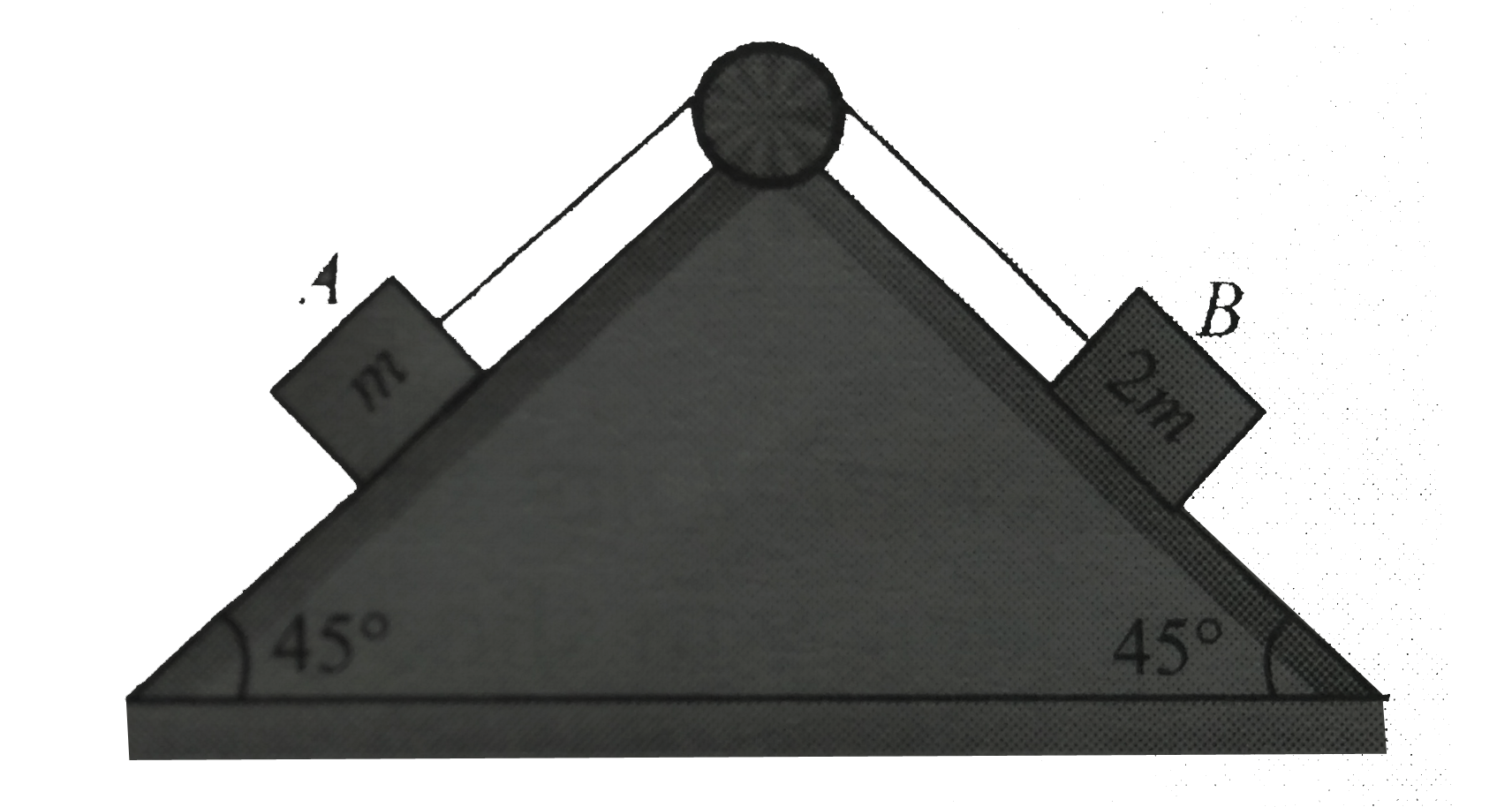 A−1ms−2B1.2ms−2C0.2ms−2Dzero
A−1ms−2B1.2ms−2C0.2ms−2Dzero
Two blocks A and B are connected to each other by a string and a spring, the string passes over a frictionless pulley as shown in Block B slides over the horizontal surface of a stationary block C and the block. A slides along the vertical side of C, both with same uniform speed. The coefficient of friction between the surface of the blocks is 0.2 Force constant of the spring is 1960 N/m if the mass of block A is 2 kg calculate the mass of the block B and the energy stored in the spring.
View SolutionBlock A of mass m and block B of mass 2m are placed on a fixed triangular wedge by means of a light and inextensible string and a frictionless pulley as shown in fig . The wedge is inclined at 45∘ to the horizontal on both sides . The coefficient of friction between the block Aand the wedge is 2/3 and that between the block B and the wedge is 1/3 .If the system of AandB is released from rest then find .
a. the acceleration of A
b. tension in the string
c.the magnitude and direction of the frictional force acting on A
View SolutionA block of mass m is at rest over the rough surface of the fixed wedge.
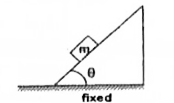

View SolutionA block of mass M is being pulley along horizontal surface .The coefficient of friction the block and the surface is μ If another block of mass M/2 is placed on the block and it is pulled is again pulled on the surface , the coefficient of friction the block and the surface will be
View SolutionBlock A of mass m and block B of mass 2m are placed on a fixed traingular wedge by means of a massless inextensible string and a frictionless pulley as shown in figure The wedge is inclined at 45∘to the horizontal on both sides .The coefficient of friction between blocks A and the wedge is 2/3 and that between block B and the wedge is 1/3. If the system A and B is released from rest find the following
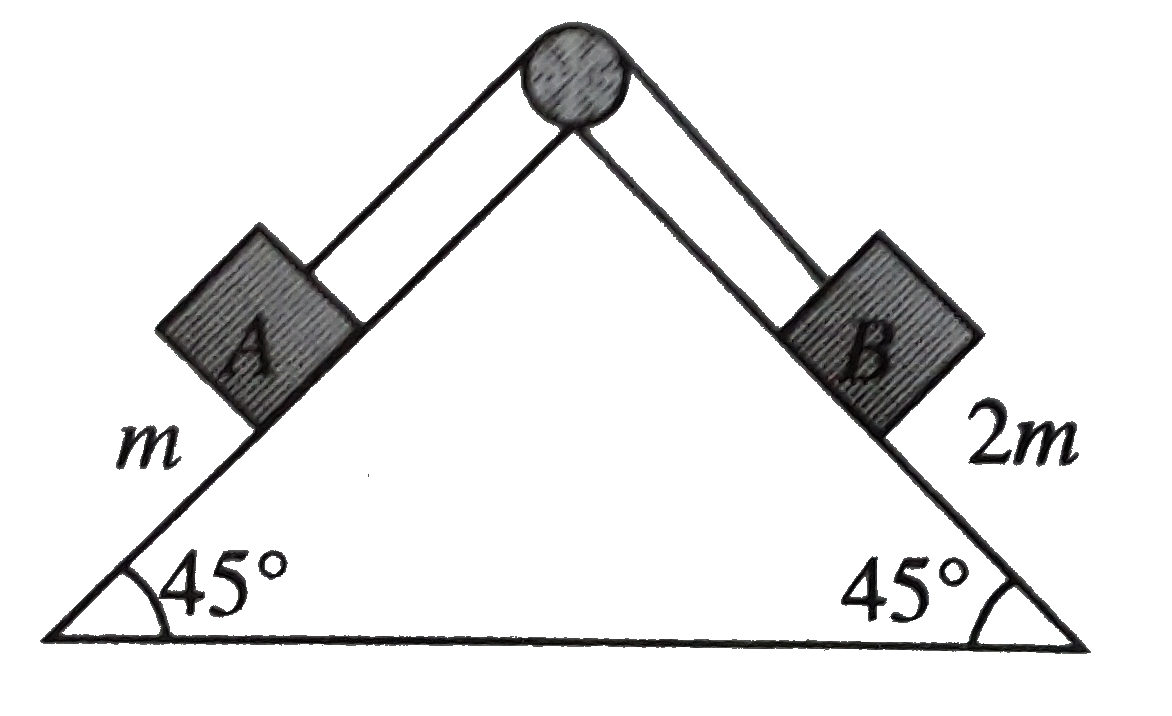
The acceleration of A is
View Solution
